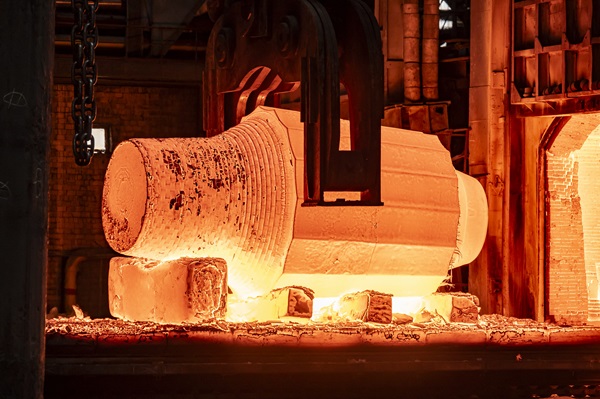
Metallurgists at AEM-Spetsstal, part of Rosatom’s machine building division, have begun forging the first key components of the reactor vessel for Unit 6 of Hungary’s Paks II nuclear power plant.
Weighing around 600 tonnes, the heavy-duty steel parts are being manufactured in St. Petersburg, Russia, marking a major step forward in Europe’s ambitious clean energy project based on the latest Russian nuclear technology.
The forging process was witnessed by representatives of the foreign customer, underscoring the international scope of the initiative. According to the president and CEO of Paks II Ltd., Gergely Jákli the project represents the largest nuclear investment in the European Union. He emphasised that with two new power units under construction at Paks, Hungary will be able to generate a significant share of its electricity sustainably through to the end of this century.
Jákli highlighted the progress in producing long-cycle equipment, crediting the efforts of Hungarian specialists overseeing design, licensing, and production monitoring. He confirmed that the forging of the Unit 6 reactor vessel is now underway, while final acceptance of the Unit 5 reactor shell is expected within the month.
Vice-president of JSC ASE and project director for the Paks construction, Vitaly Polyanin echoed this optimism, stating that the project remains on schedule. He noted that starting long-cycle equipment production for Unit 6 just a year after work commenced on Unit 5 demonstrates the steady momentum of the development.
The Paks II plant will feature the VVER-1200 Generation III+ reactor, a cutting-edge design known for its enhanced safety features and operational reliability. These reactors are poised to supply clean, stable electricity to Hungary for decades, boosting national energy security while significantly cutting carbon emissions.
Head of Rosatom’s machine-building division, Igor Kotov described the reactor vessel as the “heart” of the power plant. He reported that forging is now in progress for both Units 5 and 6, with plans underway to begin manufacturing other essential components such as steam generators, pressurisers, safety system tanks and turbine hall equipment. Kotov added that multiple Rosatom facilities across Russia, including sites in Moscow, Podolsk, St. Petersburg, Petrozavodsk and Volgodonsk, are contributing to the timely production of equipment.
The Paks II project stems from a Russian-Hungarian intergovernmental agreement signed in 2014. Hungary’s national regulator granted the main construction license in 2022, confirming full compliance with both domestic and European Union safety standards. VVER-1200 reactors are already operational in Russia and Belarus, demonstrating the technology’s maturity and reliability for international projects.
The milestone at Paks II underscores Rosatom’s growing role as a global energy partner. Beyond Europe, Rosatom is expanding its nuclear portfolio in Africa, where it is constructing Egypt’s first large-scale nuclear power plant at El-Dabaa. The company has also signed agreements with Ghana and Nigeria to support nuclear infrastructure development and explore future energy solutions.
As electricity demand grows worldwide and the need for climate-resilient energy intensifies, Rosatom’s expertise offers countries a path toward sustainable, long-term power generation.

